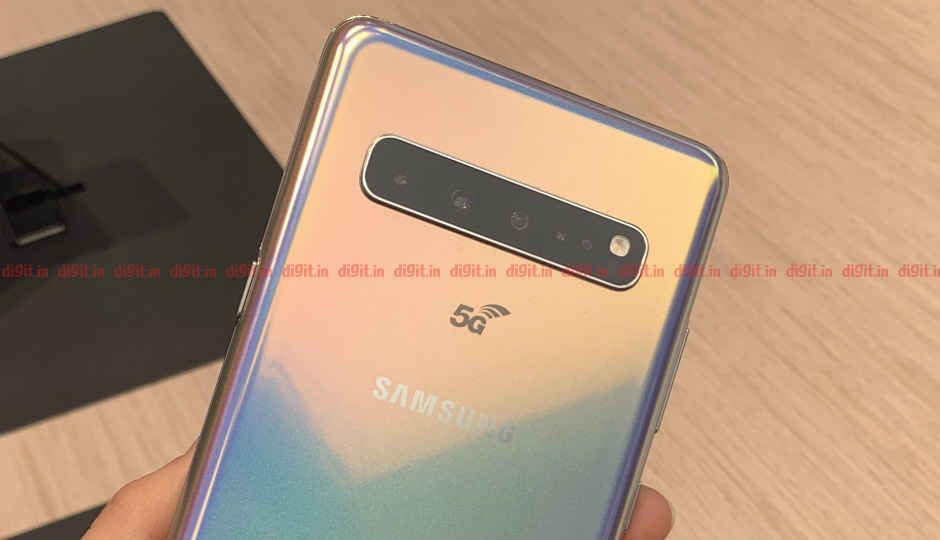
Highlights: Here are all the 5G phones announced at the ongoing MWC 2019. Smartphone makers like Xiaomi, LG, Huawei and others announced their 5G enabled phones. Samsung also showcased its foldable and 5G phones at the MWC 2019 show floor. Ahead of commencement of MWC 2019, several smartphone manufacturers announced their devices. While most of the hype is seen around foldable phones, that provides a glimpse at the flexible future of smartphones, ‘Intelligent Connectivity’ is the show’s theme around which several announcements were made. Some companies like Xiaomi, Huawei, and OnePlus showed off their handsets that can connect to the 5G network but though there is no definitive timeline to when most of the showcased devices will be made available for the masses. Here is a list of all the 5G enabled phones that have been showcased till now at the ongoing MWC 2019. Xiaomi Mi Mix 3 5G After launching the Mi Mix 3, Xiaomi said that it will announce a 5G variant of the phone. Keeping true to its promise, the unveiled a 5G variant of the Mi Mix 3 at MWC 2019. It runs on the octa-core Qualcomm Snapdragon 855 SoC, which is paired with a Snapdragon X50 5G modem that enables 5G connectivity. The Mi Mix 3 5G retains the original features of the Mi Mix 3 and ships with a ceramic body and a slider mechanism for the front camera. Xiaomi has kept the Mi Mix 3 5G on the lower side of the spectrum at 599 euros (Rs 48,251 approx), making it the cheapest 5G smartphone announced so far in 2019. LG V50 ThinQ 5G LG launched its V50 ThinQ at MWC 2019, which not only offers 5G connectivity but also supports a second screen. Powered by the Snapdragon 855 SoC, and coupled with the Snapdragon X50 5G modem for 5G connectivity, the V50 ThinQ is the company’s first smartphone with 5G connectivity that is slated to be launched in select markets. The device features a 6.4-inch QHD+ OLED display with 19.5:9 aspect ratio and HDR10 support. It sports pogo pins to which one can attach a secondary display that’s sold separately as a case. Huawei Mate X The Huawei Mate X is a foldable smartphone that also supports 5G connectivity. This is the only handset in this list to not run on the Snapdragon platform since the company has used its own Bailong 5000 5G modem, which is paired with the Kirin 980 processor that powers the phone. The folded OLED display is 6.6-inch in size, which, when unfolded, turns into an 8-inch display. The Huawei Mate X features 8GB RAM with 512GB storage and is priced at €2299 (Rs 1,85,624 approx). ZTE Axon 10 Pro 5G While ZTE rarely brings any of its devices to India, it would be unfair to leave it out of this list. The company’s first 5G smartphone is the ZTE Axon 10 Pro 5G, which, like many other handsets in this article, is powered by the Snapdragon 855 SoC. It comes with 6GB RAM, coupled with 128GB of internal storage. While it doesn’t fold or bend, it does come equipped with a triple camera setup and an in-display fingerprint sensor. Samsung Galaxy Fold While Samsung announced its latest Galaxy S10 lineup and a foldable phone at a separate event, it did showcase the phones at the MWC 2019. The Galaxy Fold is the company’s first foldable smartphone that sports a 7.3-inch Super AMOLED unfolded display and a 4.6-inch secondary display. It runs on the Snapdragon 855 SoC, which is coupled with a whopping 12GB RAM and 512GB of storage. It is also priced quite steeply at $1,980 (Rs 1,40,650 approx). Samsung Galaxy S10 5G Samsung’s non-foldable, yet flagship, Galaxy S10 is also 5G enabled. It runs on the Qualcomm Snapdragon 855 platform, which is paired with the company’s X50 modem. While there is no information on whether the device will make it to the Indian shores, if it does, it is most likely to run on the company's Exynos 9820 SoC, which might be again paired with the X50 modem. You can catch up on what's launched at MWC 2019 here. Related Reads: Samsung Galaxy S10e First Impressions: Compact and uncompromising Qualcomm Snapdragon X55 5G modem launched with 4G/5G support, Samsung to debut it in 2020

from Latest Technology News https://ift.tt/2SqYdTR
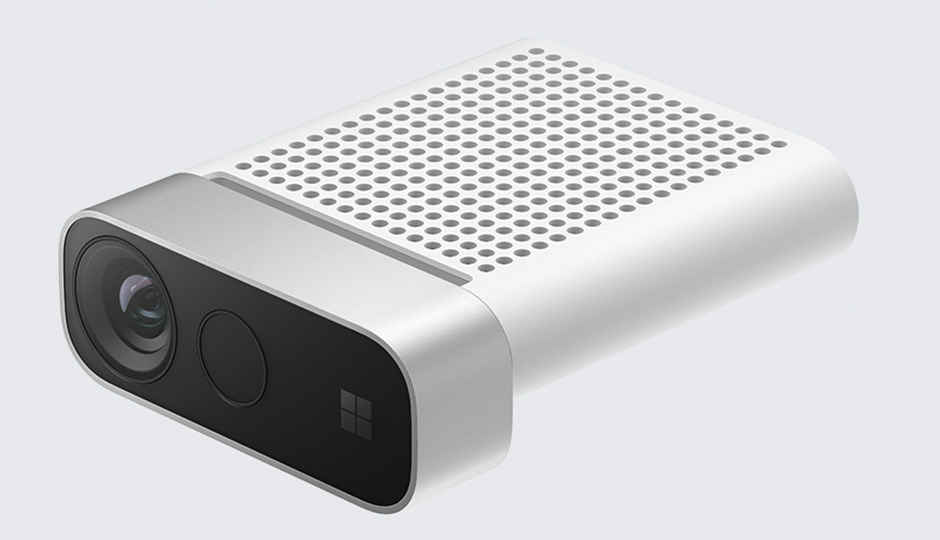 Highlights New Kinect is a PC accessory for developers Useful for developing speech and computer models No longer an Xbox compatible accessory Microsoft took to stage at Mobile World Congress to announce its HoloLens 2, but during that time, they also announced the new avatar of the Kinect. Microsoft is officially bringing the defunct Xbox accessory back, but not as an accessory for the Xbox. The new Kinect will have nothing to do with the console, but Microsoft, it seems, finally has a plan for the device. The new Kinect, for starters, is a whole lot smaller than the one we saw ship with the Xbox. Microsoft has revamped the Kinect to be a PC accessory that weighs just 440 grams. The light and compact Kinect now houses an upgrade RGB camera capable of resolving images in 3840x2160. In addition to the new camera, there are also 7 microphones on board, against the 4 that were present on the Kinect for Xbox. The purpose of the new Kinect is to help developers leverage the device in conjunction with Azure for computer vision and speech models. Microsoft plans to release an Azure Kinect Developer Kit. Unfortunately, any developer who has an existing Kinect app will need to recode the app to work with the new SDK as the two formats won't talk to each other. To augment the Azure Kinect SDK, Microsoft will release new sensor SDK, body tracking SDK, vision APIs, and speech service although Microsoft has not yet released all the SDKs just yet. For the very few hoping to use the Kinect with the Xbox, this new camera is not compatible with the Xbox in any way. However, The Verge reports that the new camera works just like the old one in terms of its ability to track body movement in X, Y and Z axis. Azure Kinect has a retail price of $399 and is up for pre-order. Related Reads: MWC 2019: Microsoft unveils HoloLens 2
Highlights New Kinect is a PC accessory for developers Useful for developing speech and computer models No longer an Xbox compatible accessory Microsoft took to stage at Mobile World Congress to announce its HoloLens 2, but during that time, they also announced the new avatar of the Kinect. Microsoft is officially bringing the defunct Xbox accessory back, but not as an accessory for the Xbox. The new Kinect will have nothing to do with the console, but Microsoft, it seems, finally has a plan for the device. The new Kinect, for starters, is a whole lot smaller than the one we saw ship with the Xbox. Microsoft has revamped the Kinect to be a PC accessory that weighs just 440 grams. The light and compact Kinect now houses an upgrade RGB camera capable of resolving images in 3840x2160. In addition to the new camera, there are also 7 microphones on board, against the 4 that were present on the Kinect for Xbox. The purpose of the new Kinect is to help developers leverage the device in conjunction with Azure for computer vision and speech models. Microsoft plans to release an Azure Kinect Developer Kit. Unfortunately, any developer who has an existing Kinect app will need to recode the app to work with the new SDK as the two formats won't talk to each other. To augment the Azure Kinect SDK, Microsoft will release new sensor SDK, body tracking SDK, vision APIs, and speech service although Microsoft has not yet released all the SDKs just yet. For the very few hoping to use the Kinect with the Xbox, this new camera is not compatible with the Xbox in any way. However, The Verge reports that the new camera works just like the old one in terms of its ability to track body movement in X, Y and Z axis. Azure Kinect has a retail price of $399 and is up for pre-order. Related Reads: MWC 2019: Microsoft unveils HoloLens 2 Highlights: Here are all the 5G phones announced at the ongoing MWC 2019. Smartphone makers like Xiaomi, LG, Huawei and others announced their 5G enabled phones. Samsung also showcased its foldable and 5G phones at the MWC 2019 show floor. Ahead of commencement of MWC 2019, several smartphone manufacturers announced their devices. While most of the hype is seen around foldable phones, that provides a glimpse at the flexible future of smartphones, ‘Intelligent Connectivity’ is the show’s theme around which several announcements were made. Some companies like Xiaomi, Huawei, and OnePlus showed off their handsets that can connect to the 5G network but though there is no definitive timeline to when most of the showcased devices will be made available for the masses. Here is a list of all the 5G enabled phones that have been showcased till now at the ongoing MWC 2019. Xiaomi Mi Mix 3 5G After launching the Mi Mix 3, Xiaomi said that it will announce a 5G variant of the phone. Keeping true to its promise, the unveiled a 5G variant of the Mi Mix 3 at MWC 2019. It runs on the octa-core Qualcomm Snapdragon 855 SoC, which is paired with a Snapdragon X50 5G modem that enables 5G connectivity. The Mi Mix 3 5G retains the original features of the Mi Mix 3 and ships with a ceramic body and a slider mechanism for the front camera. Xiaomi has kept the Mi Mix 3 5G on the lower side of the spectrum at 599 euros (Rs 48,251 approx), making it the cheapest 5G smartphone announced so far in 2019. LG V50 ThinQ 5G LG launched its V50 ThinQ at MWC 2019, which not only offers 5G connectivity but also supports a second screen. Powered by the Snapdragon 855 SoC, and coupled with the Snapdragon X50 5G modem for 5G connectivity, the V50 ThinQ is the company’s first smartphone with 5G connectivity that is slated to be launched in select markets. The device features a 6.4-inch QHD+ OLED display with 19.5:9 aspect ratio and HDR10 support. It sports pogo pins to which one can attach a secondary display that’s sold separately as a case. Huawei Mate X The Huawei Mate X is a foldable smartphone that also supports 5G connectivity. This is the only handset in this list to not run on the Snapdragon platform since the company has used its own Bailong 5000 5G modem, which is paired with the Kirin 980 processor that powers the phone. The folded OLED display is 6.6-inch in size, which, when unfolded, turns into an 8-inch display. The Huawei Mate X features 8GB RAM with 512GB storage and is priced at €2299 (Rs 1,85,624 approx). ZTE Axon 10 Pro 5G While ZTE rarely brings any of its devices to India, it would be unfair to leave it out of this list. The company’s first 5G smartphone is the ZTE Axon 10 Pro 5G, which, like many other handsets in this article, is powered by the Snapdragon 855 SoC. It comes with 6GB RAM, coupled with 128GB of internal storage. While it doesn’t fold or bend, it does come equipped with a triple camera setup and an in-display fingerprint sensor. Samsung Galaxy Fold While Samsung announced its latest Galaxy S10 lineup and a foldable phone at a separate event, it did showcase the phones at the MWC 2019. The Galaxy Fold is the company’s first foldable smartphone that sports a 7.3-inch Super AMOLED unfolded display and a 4.6-inch secondary display. It runs on the Snapdragon 855 SoC, which is coupled with a whopping 12GB RAM and 512GB of storage. It is also priced quite steeply at $1,980 (Rs 1,40,650 approx). Samsung Galaxy S10 5G Samsung’s non-foldable, yet flagship, Galaxy S10 is also 5G enabled. It runs on the Qualcomm Snapdragon 855 platform, which is paired with the company’s X50 modem. While there is no information on whether the device will make it to the Indian shores, if it does, it is most likely to run on the company's Exynos 9820 SoC, which might be again paired with the X50 modem. You can catch up on what's launched at MWC 2019 here. Related Reads: Samsung Galaxy S10e First Impressions: Compact and uncompromising Qualcomm Snapdragon X55 5G modem launched with 4G/5G support, Samsung to debut it in 2020
Highlights: Here are all the 5G phones announced at the ongoing MWC 2019. Smartphone makers like Xiaomi, LG, Huawei and others announced their 5G enabled phones. Samsung also showcased its foldable and 5G phones at the MWC 2019 show floor. Ahead of commencement of MWC 2019, several smartphone manufacturers announced their devices. While most of the hype is seen around foldable phones, that provides a glimpse at the flexible future of smartphones, ‘Intelligent Connectivity’ is the show’s theme around which several announcements were made. Some companies like Xiaomi, Huawei, and OnePlus showed off their handsets that can connect to the 5G network but though there is no definitive timeline to when most of the showcased devices will be made available for the masses. Here is a list of all the 5G enabled phones that have been showcased till now at the ongoing MWC 2019. Xiaomi Mi Mix 3 5G After launching the Mi Mix 3, Xiaomi said that it will announce a 5G variant of the phone. Keeping true to its promise, the unveiled a 5G variant of the Mi Mix 3 at MWC 2019. It runs on the octa-core Qualcomm Snapdragon 855 SoC, which is paired with a Snapdragon X50 5G modem that enables 5G connectivity. The Mi Mix 3 5G retains the original features of the Mi Mix 3 and ships with a ceramic body and a slider mechanism for the front camera. Xiaomi has kept the Mi Mix 3 5G on the lower side of the spectrum at 599 euros (Rs 48,251 approx), making it the cheapest 5G smartphone announced so far in 2019. LG V50 ThinQ 5G LG launched its V50 ThinQ at MWC 2019, which not only offers 5G connectivity but also supports a second screen. Powered by the Snapdragon 855 SoC, and coupled with the Snapdragon X50 5G modem for 5G connectivity, the V50 ThinQ is the company’s first smartphone with 5G connectivity that is slated to be launched in select markets. The device features a 6.4-inch QHD+ OLED display with 19.5:9 aspect ratio and HDR10 support. It sports pogo pins to which one can attach a secondary display that’s sold separately as a case. Huawei Mate X The Huawei Mate X is a foldable smartphone that also supports 5G connectivity. This is the only handset in this list to not run on the Snapdragon platform since the company has used its own Bailong 5000 5G modem, which is paired with the Kirin 980 processor that powers the phone. The folded OLED display is 6.6-inch in size, which, when unfolded, turns into an 8-inch display. The Huawei Mate X features 8GB RAM with 512GB storage and is priced at €2299 (Rs 1,85,624 approx). ZTE Axon 10 Pro 5G While ZTE rarely brings any of its devices to India, it would be unfair to leave it out of this list. The company’s first 5G smartphone is the ZTE Axon 10 Pro 5G, which, like many other handsets in this article, is powered by the Snapdragon 855 SoC. It comes with 6GB RAM, coupled with 128GB of internal storage. While it doesn’t fold or bend, it does come equipped with a triple camera setup and an in-display fingerprint sensor. Samsung Galaxy Fold While Samsung announced its latest Galaxy S10 lineup and a foldable phone at a separate event, it did showcase the phones at the MWC 2019. The Galaxy Fold is the company’s first foldable smartphone that sports a 7.3-inch Super AMOLED unfolded display and a 4.6-inch secondary display. It runs on the Snapdragon 855 SoC, which is coupled with a whopping 12GB RAM and 512GB of storage. It is also priced quite steeply at $1,980 (Rs 1,40,650 approx). Samsung Galaxy S10 5G Samsung’s non-foldable, yet flagship, Galaxy S10 is also 5G enabled. It runs on the Qualcomm Snapdragon 855 platform, which is paired with the company’s X50 modem. While there is no information on whether the device will make it to the Indian shores, if it does, it is most likely to run on the company's Exynos 9820 SoC, which might be again paired with the X50 modem. You can catch up on what's launched at MWC 2019 here. Related Reads: Samsung Galaxy S10e First Impressions: Compact and uncompromising Qualcomm Snapdragon X55 5G modem launched with 4G/5G support, Samsung to debut it in 2020 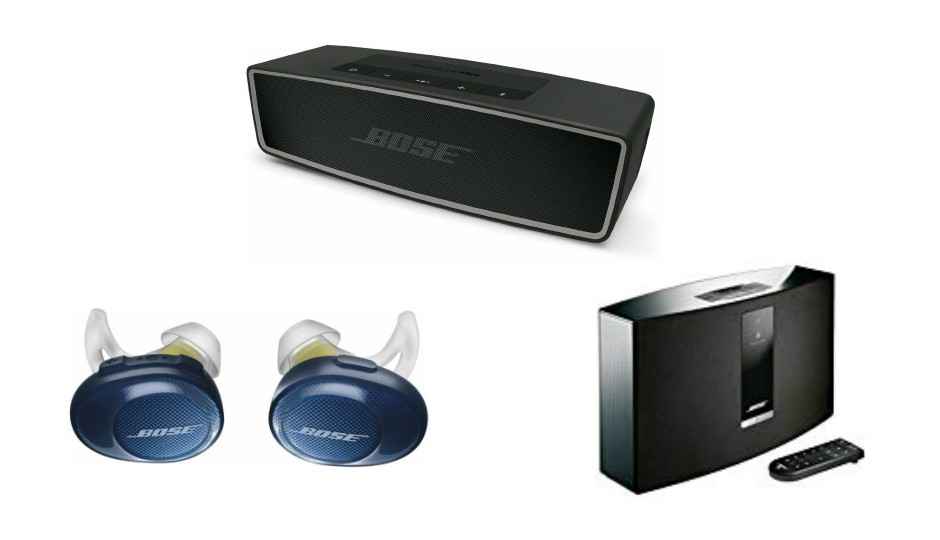 Amazon is once again back with its Bose Week that will run till March 2. During the sale, the e-commerce website is giving some exciting cashback and discounts on Bose audio accessories. The offers will be different each day and as per the information on the landing page, buyers will get a chance to save up to 50% on their purchase. The sale is now on day 3 so let’s take a look at the deals that are available on Amazon during this sale. Day 3, 26th Feb- On day 3, Amazon is offering up to 20% off on Bose Companion 50, Companion 2 III, Soundtouch 20 III and more. Check out the deal here. Day 4, 27th Feb- On Day 4, buyers can get up to 5% cash back on their purchase on making payment via an HDFC bank card. There is also a no-cost EMI available for 18 months. Check out the offers here. Day 5, 28 Feb- On Day 5, customers will get Rs 2,000 cash back on purchasing SoundSports wireless earphones and SoundSports Pulse speaker. Besides that, there is also Rs 1,000 cash back available on buying Soundlink Micro. Check out the deal here. Day 6, March 1- On the second last day of the sale, Amazon is giving away Bose Soundlink Micro at Rs 2,999 on buying selected Bose products. The speaker is originally available at Rs 8,999 in India. Check out the deal here. Day 7, March 2 - On the last day, buyers will get Rs 1,900 cash back on purchasing of SoundSports Pulse and Rs 1,000 cash back on buying SoundLink Micro as Amazon Pay balance. Check out the deal here.
Amazon is once again back with its Bose Week that will run till March 2. During the sale, the e-commerce website is giving some exciting cashback and discounts on Bose audio accessories. The offers will be different each day and as per the information on the landing page, buyers will get a chance to save up to 50% on their purchase. The sale is now on day 3 so let’s take a look at the deals that are available on Amazon during this sale. Day 3, 26th Feb- On day 3, Amazon is offering up to 20% off on Bose Companion 50, Companion 2 III, Soundtouch 20 III and more. Check out the deal here. Day 4, 27th Feb- On Day 4, buyers can get up to 5% cash back on their purchase on making payment via an HDFC bank card. There is also a no-cost EMI available for 18 months. Check out the offers here. Day 5, 28 Feb- On Day 5, customers will get Rs 2,000 cash back on purchasing SoundSports wireless earphones and SoundSports Pulse speaker. Besides that, there is also Rs 1,000 cash back available on buying Soundlink Micro. Check out the deal here. Day 6, March 1- On the second last day of the sale, Amazon is giving away Bose Soundlink Micro at Rs 2,999 on buying selected Bose products. The speaker is originally available at Rs 8,999 in India. Check out the deal here. Day 7, March 2 - On the last day, buyers will get Rs 1,900 cash back on purchasing of SoundSports Pulse and Rs 1,000 cash back on buying SoundLink Micro as Amazon Pay balance. Check out the deal here.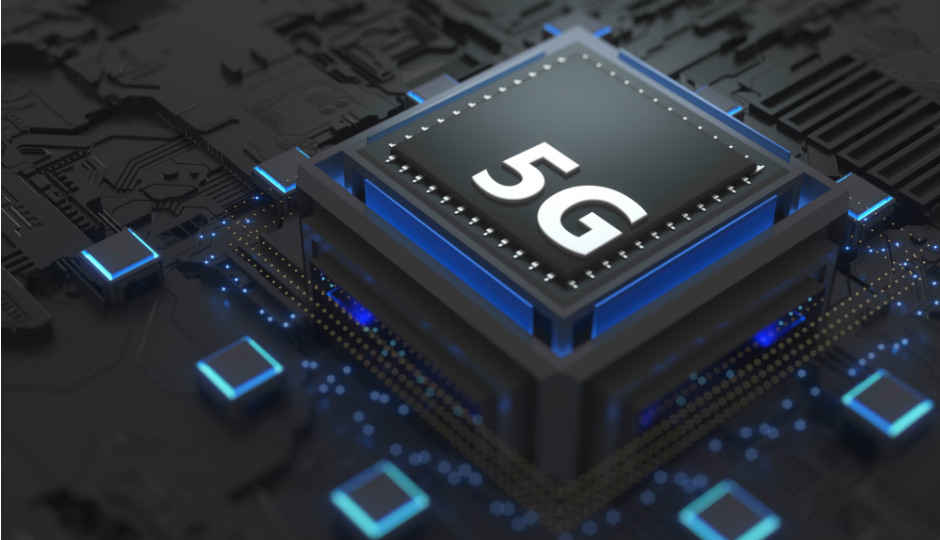 Highlights Vulnerability allows attackers to track phone's location Additional attacks could let hackers intercept phone calls and messages Vulnerability impacts both 4G and 5G networks A group of academic researchers from Purdue University and the University of Iowa have revealed vulnerabilities in 4G and 5G infrastructure that allow those with malicious intent to track the location of any mobile phone. More worrisome is their claim that the vulnerabilities they have discovered could also allow hackers to intercept phone calls. This is supposedly the first time a vulnerability has been discovered that impacts both 4G and the upcoming 5G standard. Besides higher data speeds and lower latencies, 5G also promised improved security, which this new flaw seems to be able to circumvent. The researchers are to present their paper on the topic at the Network and Distributed System Security Symposium in San Diego. TechCrunch has had early access to the paper, and have had a look at how the three attacks work to achieve their goal. The first attack is called Torpedo and exploits the paging protocol which carriers use to notify the phone about an incoming text or call before it is received. The attack involves calling the target phone a number of times in short duration, which triggers a paging message without alerting the target device to an incoming call. This, an attacker can use to track a victim’s location. Torpedo further allows two more attacks; Piercer and IMSI-Cracking attack. The former refers to the attack's ability to identify the International Mobile Subscriber Identity of a cellphone. IMSI is supposed to be encrypted. The IMSI Attack can further use brute force against the IMSI number, which allows the attacker to track a phone’s location and intercept calls and messages. The researchers say that the flaws were reported to GSMA, the body that represents mobile operators, but received no comment. According to the researchers, the Torpedo attack would be the first priority to address, since that is the gateway for the other two attacks. After that, the GSMA would need to address the IMSI attack while the operators would be responsible for fixing the vulnerability that allows the execution of the Piercer attack. Related Read: Qualcomm Snapdragon X55 5G modem launched with 4G/5G support, Samsung to debut it in 2020
Highlights Vulnerability allows attackers to track phone's location Additional attacks could let hackers intercept phone calls and messages Vulnerability impacts both 4G and 5G networks A group of academic researchers from Purdue University and the University of Iowa have revealed vulnerabilities in 4G and 5G infrastructure that allow those with malicious intent to track the location of any mobile phone. More worrisome is their claim that the vulnerabilities they have discovered could also allow hackers to intercept phone calls. This is supposedly the first time a vulnerability has been discovered that impacts both 4G and the upcoming 5G standard. Besides higher data speeds and lower latencies, 5G also promised improved security, which this new flaw seems to be able to circumvent. The researchers are to present their paper on the topic at the Network and Distributed System Security Symposium in San Diego. TechCrunch has had early access to the paper, and have had a look at how the three attacks work to achieve their goal. The first attack is called Torpedo and exploits the paging protocol which carriers use to notify the phone about an incoming text or call before it is received. The attack involves calling the target phone a number of times in short duration, which triggers a paging message without alerting the target device to an incoming call. This, an attacker can use to track a victim’s location. Torpedo further allows two more attacks; Piercer and IMSI-Cracking attack. The former refers to the attack's ability to identify the International Mobile Subscriber Identity of a cellphone. IMSI is supposed to be encrypted. The IMSI Attack can further use brute force against the IMSI number, which allows the attacker to track a phone’s location and intercept calls and messages. The researchers say that the flaws were reported to GSMA, the body that represents mobile operators, but received no comment. According to the researchers, the Torpedo attack would be the first priority to address, since that is the gateway for the other two attacks. After that, the GSMA would need to address the IMSI attack while the operators would be responsible for fixing the vulnerability that allows the execution of the Piercer attack. Related Read: Qualcomm Snapdragon X55 5G modem launched with 4G/5G support, Samsung to debut it in 2020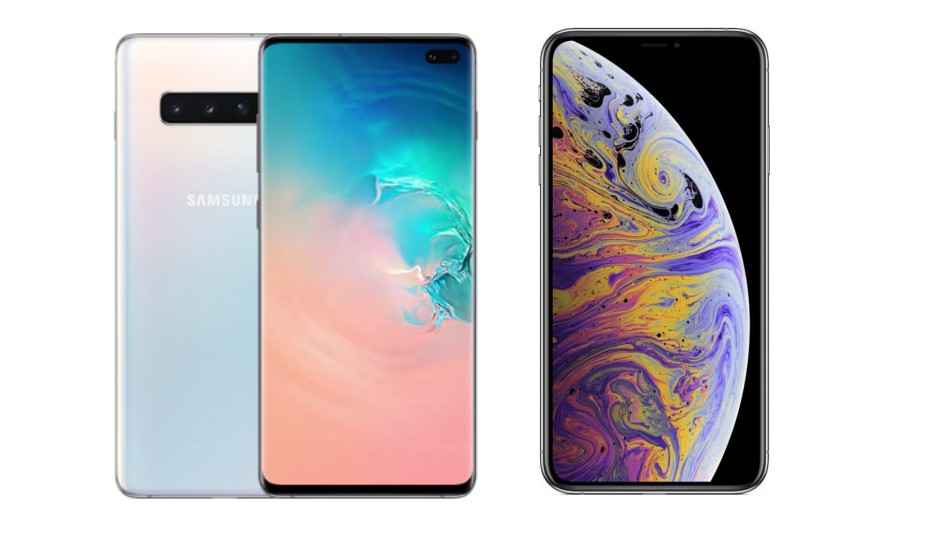 Recently, Samsung has launched three new devices under it's Galaxy S lineup - Galaxy S10, Galaxy S10e, and Galaxy S10+. The premium device of the lot is the Galaxy S10+, which is starting at Rs 73,900 in India. The key highlights of the Galaxy S10+ are in-display Ultrasonic fingerprint sensor, triple camera setup on the back and a dual front camera. The phone is directly competing against Apple’s most expensive device till date iPhone XS Max, which is powered by the Apple latest A12 Bionic chipset. So, let’s compare the specs of these two devices quickly to see which one is more powerful when it comes to the hardware. Display The Samsung Galaxy S10+ features a huge 6.4-inch QHD+ display that offers a resolution of 3040 x 1440 pixels. It is the first device by Samsung that comes with an Infinity-O display, which means instead of a notch there is a little wider punch hole cut out at the front for a dual selfie camera. On the other hand, the Apple iPhone XS Max sports even a little bigger 6.5-inch screen that comes with a resolution of 1242 x 2688 pixels. The phone has a traditional notch on top of it, which houses the front-facing camera and a microphone. Processor, RAM, and storage The Samsung Galaxy S10+ is powered by an Exynos 9820 octa-core processor, which is coupled with 8GB RAM and 128GB internal memory. The phone internal storage can be expanded to up to 512GB via a microSD card. The Samsung has also launched a higher-end version of the Galaxy S10+, which comes with 12GB RAM and 1TB of storage, which is also expandable. On the other hand, the iPhone XS Max is powered by the Apple latest A12 Bionic chipset, which is paired with 4GB RAM and 64GB internal memory. As usual, there is no microSD card slot to expand its memory. However, the device is available in 256GB and 512GB storage models, which are insanely expensive and available in India at Rs 1,24,900 and 1,36,9000 respectively. Cameras The Samsung Galaxy S10+ comes with a triple 12MP + 16MP + 12MP camera setup on the back. There is a telephone lens for zooming, a wide angle lens for your regular clicks and an ultra-wide angle sensor for landscapes. The phone has a dual 10MP + 8MP front cameras for clicking selfies. On the other side, the iPhone XS Max comes with a dual 12MP rear cameras and a 7MP sensor on the front. Price The Samsung Galaxy S10+ is now can be pre-booked via Samsung’s official website. Those with an HDFC bank card can also get a Rs 6,000 cash back on making payment via bank’s debit or credit card. On the other side, the iPhone XS Max 4GB/64GB variant is available in India at Rs 1,09,900.
Recently, Samsung has launched three new devices under it's Galaxy S lineup - Galaxy S10, Galaxy S10e, and Galaxy S10+. The premium device of the lot is the Galaxy S10+, which is starting at Rs 73,900 in India. The key highlights of the Galaxy S10+ are in-display Ultrasonic fingerprint sensor, triple camera setup on the back and a dual front camera. The phone is directly competing against Apple’s most expensive device till date iPhone XS Max, which is powered by the Apple latest A12 Bionic chipset. So, let’s compare the specs of these two devices quickly to see which one is more powerful when it comes to the hardware. Display The Samsung Galaxy S10+ features a huge 6.4-inch QHD+ display that offers a resolution of 3040 x 1440 pixels. It is the first device by Samsung that comes with an Infinity-O display, which means instead of a notch there is a little wider punch hole cut out at the front for a dual selfie camera. On the other hand, the Apple iPhone XS Max sports even a little bigger 6.5-inch screen that comes with a resolution of 1242 x 2688 pixels. The phone has a traditional notch on top of it, which houses the front-facing camera and a microphone. Processor, RAM, and storage The Samsung Galaxy S10+ is powered by an Exynos 9820 octa-core processor, which is coupled with 8GB RAM and 128GB internal memory. The phone internal storage can be expanded to up to 512GB via a microSD card. The Samsung has also launched a higher-end version of the Galaxy S10+, which comes with 12GB RAM and 1TB of storage, which is also expandable. On the other hand, the iPhone XS Max is powered by the Apple latest A12 Bionic chipset, which is paired with 4GB RAM and 64GB internal memory. As usual, there is no microSD card slot to expand its memory. However, the device is available in 256GB and 512GB storage models, which are insanely expensive and available in India at Rs 1,24,900 and 1,36,9000 respectively. Cameras The Samsung Galaxy S10+ comes with a triple 12MP + 16MP + 12MP camera setup on the back. There is a telephone lens for zooming, a wide angle lens for your regular clicks and an ultra-wide angle sensor for landscapes. The phone has a dual 10MP + 8MP front cameras for clicking selfies. On the other side, the iPhone XS Max comes with a dual 12MP rear cameras and a 7MP sensor on the front. Price The Samsung Galaxy S10+ is now can be pre-booked via Samsung’s official website. Those with an HDFC bank card can also get a Rs 6,000 cash back on making payment via bank’s debit or credit card. On the other side, the iPhone XS Max 4GB/64GB variant is available in India at Rs 1,09,900.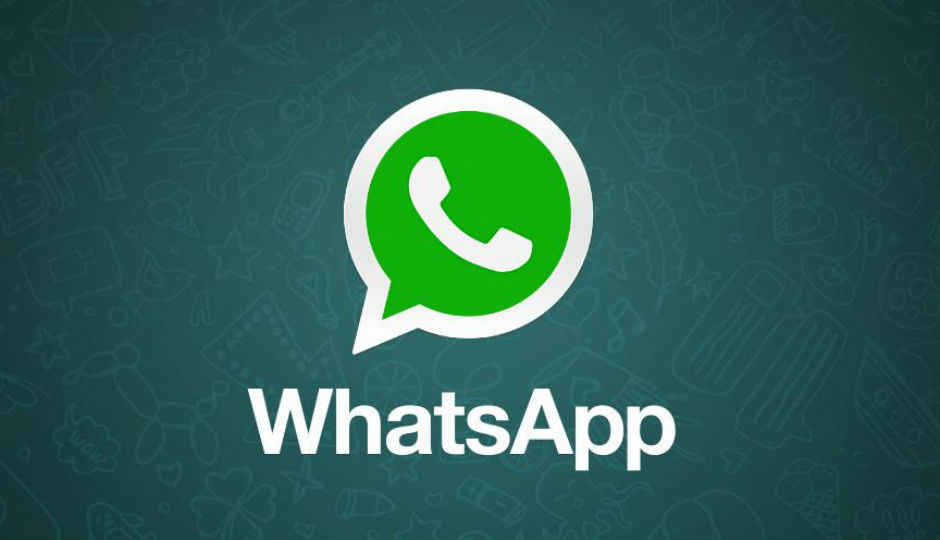 Highlights: WhatsApp celebrates ten years of service Thanks its users for sticking around Can you believe it? WhatsApp is ten years old. We’ve had this indispensable chat app in our lives for a whole decade now. To celebrate the app’s tenth anniversary, and to thank its 1.5 billion users for their loyalty, WhatsApp penned a message on its blog and uploaded a cheerful video on YouTube. In its blog post, the Facebook-owned company outlined out the major milestones it saw in its ten-year run in a simple graphic. The chat app’s most recent feature additions include stickers and group calling. For those of you curious to learn about the app’s origins, it might interest you to know that WhatsApp was founded in 2009 by Brian Acton and Jan Koum, two employees who had quit Yahoo in 2007 and travelled to South America on holiday. When Koum bought an iPhone in early 2009, he realised just how much could be developed on the App Store. And so, with the help of his friend Alex Fishman, he hired Russian developer Igor Solomennikov through RentACoder.com (now Freelancer.com) to develop a messaging app that would have “statuses next to individual names of the people”. Thus began WhatsApp’s story in the world of iOS and Android smartphones. Though the first versions of WhatsApp were horribly buggy (and nearly made Koum give up on it for good), the app gradually found stability, and in just six months, saw an active user base of 2,50,000. After the first four years, WhatsApp claimed to have nearly 200 million active users. By the time Facebook agreed to acquire WhatsApp in early 2014, the app had well over 500 million active users. By then, WhatsApp was already recognised as the world’s most popular messaging app and was all set to start making voice calls. Today, WhatsApp handles 1.5 billion active users every month, of which 200 million are reported to be from India. It’s used by students, businesses, communities, and you and me. WhatsApp’s impact in India is so heavy that the app was to get country-specific features like Payment, which would allow WhatsApp users to send money to one another using Unified Payments Interface (UPI), a real-time digital payments system developed by the National Payments Corporation of India. In an attempt to curb the spread of fake news, WhatsApp had limited forwarding of messages on the app to a maximum of five users last year. It has implemented the limit globally since. WhatsApp has come a long way since its humble beginnings in 2009. Here’s to the next ten years of free and secure communication. Related Read: WhatsApp biometric app lock on iPhone plagued by screen lock bypass bug The evolution of fake news
Highlights: WhatsApp celebrates ten years of service Thanks its users for sticking around Can you believe it? WhatsApp is ten years old. We’ve had this indispensable chat app in our lives for a whole decade now. To celebrate the app’s tenth anniversary, and to thank its 1.5 billion users for their loyalty, WhatsApp penned a message on its blog and uploaded a cheerful video on YouTube. In its blog post, the Facebook-owned company outlined out the major milestones it saw in its ten-year run in a simple graphic. The chat app’s most recent feature additions include stickers and group calling. For those of you curious to learn about the app’s origins, it might interest you to know that WhatsApp was founded in 2009 by Brian Acton and Jan Koum, two employees who had quit Yahoo in 2007 and travelled to South America on holiday. When Koum bought an iPhone in early 2009, he realised just how much could be developed on the App Store. And so, with the help of his friend Alex Fishman, he hired Russian developer Igor Solomennikov through RentACoder.com (now Freelancer.com) to develop a messaging app that would have “statuses next to individual names of the people”. Thus began WhatsApp’s story in the world of iOS and Android smartphones. Though the first versions of WhatsApp were horribly buggy (and nearly made Koum give up on it for good), the app gradually found stability, and in just six months, saw an active user base of 2,50,000. After the first four years, WhatsApp claimed to have nearly 200 million active users. By the time Facebook agreed to acquire WhatsApp in early 2014, the app had well over 500 million active users. By then, WhatsApp was already recognised as the world’s most popular messaging app and was all set to start making voice calls. Today, WhatsApp handles 1.5 billion active users every month, of which 200 million are reported to be from India. It’s used by students, businesses, communities, and you and me. WhatsApp’s impact in India is so heavy that the app was to get country-specific features like Payment, which would allow WhatsApp users to send money to one another using Unified Payments Interface (UPI), a real-time digital payments system developed by the National Payments Corporation of India. In an attempt to curb the spread of fake news, WhatsApp had limited forwarding of messages on the app to a maximum of five users last year. It has implemented the limit globally since. WhatsApp has come a long way since its humble beginnings in 2009. Here’s to the next ten years of free and secure communication. Related Read: WhatsApp biometric app lock on iPhone plagued by screen lock bypass bug The evolution of fake news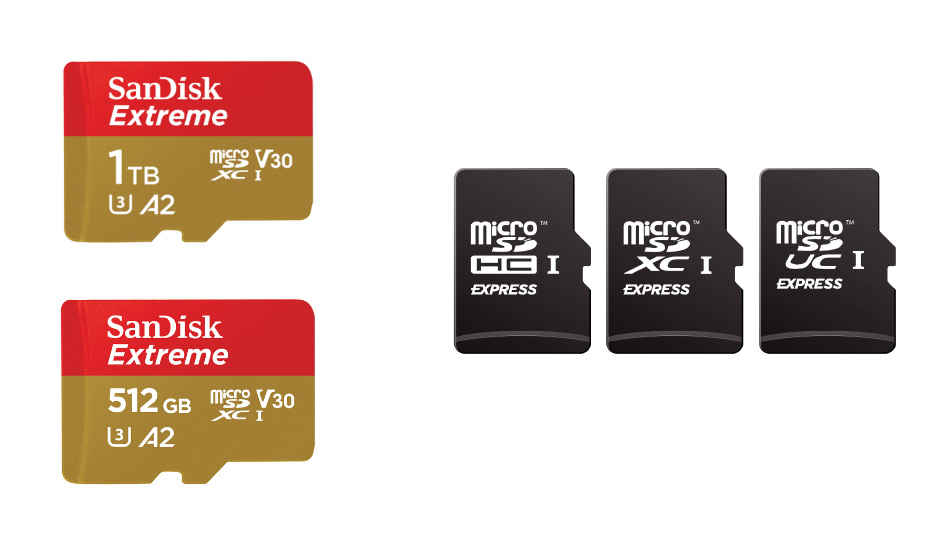 Highlights: SanDisk Extreme UHS-I microSD card with 1TB storage capacity announced. The company also unveiled a 512GB version of the card. SD Association also announced a new microSD Express format that employs the NVMe 1.3 and PCIe 3.1 interfaces. The Mobile World Congress 2019 is in full swing and a slew of tech announcements is coming in. While foldable and 5G phones seem to be the theme at this year’s MWC, companies are also making some other interesting announcements. SanDisk has launched its 1TB UHS-I microSD card, along with a 512GB variant of the same. The company says that 1TB is the highest microSD card capacity currently available. Additionally, there have been more announcements in the mobile storage space as the SD Association has unveiled a new microSD Express format. The new format employs the NVMe 1.3 and PCIe 3.1 interfaces, similar to SD Express format that is used in PCs to power SSDs. Let’s start off with the new 1TB microSD card unveiled by SanDisk. The device conforms with the Application Performance Class 1 (A2) requirements, which enables faster app loading as compared to its predecessor A1. The new memory card is claimed to enable read and write speeds of up to 160MBps and 90MBps respectively. This is said to have been made possible with the help of Western Digital’s proprietary flash technology. The SanDisk Extreme 1TB / 512GB microSDXC UHS-I card is also waterproof, shockproof, temperature proof, and X-ray proof, and is Speed Class 3 (U3) and Video Speed Class 30 (V30) certified. The new 1TB and 512GB microSD cards by SanDisk will be available in April 2019 at a price of $449.99 (Rs 31,900 approx) and $199.99 (Rs 14,201 approx) respectively. Coming to the new microSD Express format announced by the SD Association, it is touted to enable speeds of up to 985 Mb/s on cards that employ it. Alongside the PCI Express and NVMe interfaces, the microSD Express format also enables legacy connectivity since it is used with the second row of microSD pins. It is touted to deliver up to 985 MB/s of data transfer rate and the NVMe upper layer protocol enables advanced memory access mechanism as well. As PCIe 3.1 is also used, which supports low-power states, the memory cards that will employ the new format will need less power than current microSD cards. Other features like Bus Mastering, Multi-Queue (without locking mechanism) and Host Memory Buffer are also enabled with the microSD Express format. Follow our MWC 2019 coverage here. Related Reads: Samsung Galaxy S10e First Impressions: Compact and uncompromising All the foldable smartphones announced so far at MWC 2019
Highlights: SanDisk Extreme UHS-I microSD card with 1TB storage capacity announced. The company also unveiled a 512GB version of the card. SD Association also announced a new microSD Express format that employs the NVMe 1.3 and PCIe 3.1 interfaces. The Mobile World Congress 2019 is in full swing and a slew of tech announcements is coming in. While foldable and 5G phones seem to be the theme at this year’s MWC, companies are also making some other interesting announcements. SanDisk has launched its 1TB UHS-I microSD card, along with a 512GB variant of the same. The company says that 1TB is the highest microSD card capacity currently available. Additionally, there have been more announcements in the mobile storage space as the SD Association has unveiled a new microSD Express format. The new format employs the NVMe 1.3 and PCIe 3.1 interfaces, similar to SD Express format that is used in PCs to power SSDs. Let’s start off with the new 1TB microSD card unveiled by SanDisk. The device conforms with the Application Performance Class 1 (A2) requirements, which enables faster app loading as compared to its predecessor A1. The new memory card is claimed to enable read and write speeds of up to 160MBps and 90MBps respectively. This is said to have been made possible with the help of Western Digital’s proprietary flash technology. The SanDisk Extreme 1TB / 512GB microSDXC UHS-I card is also waterproof, shockproof, temperature proof, and X-ray proof, and is Speed Class 3 (U3) and Video Speed Class 30 (V30) certified. The new 1TB and 512GB microSD cards by SanDisk will be available in April 2019 at a price of $449.99 (Rs 31,900 approx) and $199.99 (Rs 14,201 approx) respectively. Coming to the new microSD Express format announced by the SD Association, it is touted to enable speeds of up to 985 Mb/s on cards that employ it. Alongside the PCI Express and NVMe interfaces, the microSD Express format also enables legacy connectivity since it is used with the second row of microSD pins. It is touted to deliver up to 985 MB/s of data transfer rate and the NVMe upper layer protocol enables advanced memory access mechanism as well. As PCIe 3.1 is also used, which supports low-power states, the memory cards that will employ the new format will need less power than current microSD cards. Other features like Bus Mastering, Multi-Queue (without locking mechanism) and Host Memory Buffer are also enabled with the microSD Express format. Follow our MWC 2019 coverage here. Related Reads: Samsung Galaxy S10e First Impressions: Compact and uncompromising All the foldable smartphones announced so far at MWC 2019 